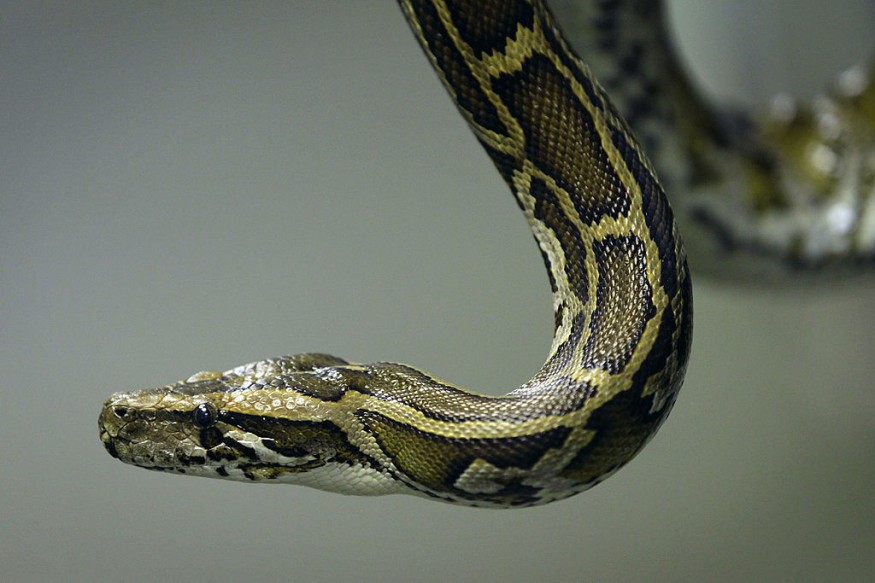
Burmese pythons, one of the world's largest snakes introduced to Florida around 50 years ago, had grown largely as an invasive species in southern Florida over the past few decades. Although their exact size in the United States is unknown, their population has indeed established itself in the country with success.
As the name suggests, Burmese pythons are native to Southeast Asia. However, a large number of the snakes roams around the Everglades, a 1.5-million-acre wetlands preserve on the southern tip of the U.S. state of Florida, Newsweek reports.
According to History, these massive snakes, which can grow to 20 feet long or more, are one of the most damaging invasive species the region has ever seen. With telephone-pole-sized girths, the reptiles have all but decimated practically every mammal in sight, wreaking havoc with the area's ecosystem.
The snakes are very hard to detect as per Newsweek, but according to estimate, their population in the state range from the tens of thousands, to more than 100,000, or perhaps even more than 300,000.
How Burmese Pythons Were Established in Florida
Burmese pythons were first introduced to Florida when thousands of the snakes were domesticated and imported to be sold as exotic pets. When some owners were unable to handle these giants, they were abandoned or illegally released into the wild.
The freed pets began to breed and eventually established a population in the state. According to research, the most likely course of establishment for them was prior to the mid-1980s when a small number of their specimens were released.
"Because pythons are so well camouflaged and hard to find, the population went mostly unnoticed until the late 1990s and early 2000s," says Bryan Falk, a program analyst at the National Invasive Species Council.
Due to their cryptic coloration, expert searchers may find only 1 percent of the pythons that are in the area they are searching, Bryan said.
According to the U.S. Geological Survey, the species is now considered invasive in the state, distributed across more than 1,000 square miles of the south, primarily in the Everglades.
How the Pythons Thrived in the Foreign Country
The climate and vast, undisturbed ecosystem of the Everglades have provided a favorable habitat for the invasive pythons where they can not just thrive but populate. In fact their "rapid and widespread invasion is facilitated by aspects of their natural history such as diverse habitat use, broad dietary preferences, long lifespan (15-25 years), high reproductive output, and ability to move long distances," authors wrote in a study led by Frank Mazzotti from the University of Florida.
Their hatchlings grew larger than hatchlings of native species and are less susceptible to predators - multiple advantages that allows them to compete with native snakes and other predators for food, habitat, and space.
Due to significant damage they impose on native wildlife, pythons are considered as one of the most concerning invasive species in southern Florida.
"Some native prey populations have significantly declined because of pythons, and we are just beginning to understand the cascading effects of these and other, less obvious impacts to the Florida ecosystem," Falk said. "One example is disease transmission," specifically mosquito-borne mammal virus.
Related article : Mexican Mayor Marries Alligator 'Dressed as a Bride' as Part of an Ancient Ritual for Good Fortune
© 2025 NatureWorldNews.com All rights reserved. Do not reproduce without permission.





